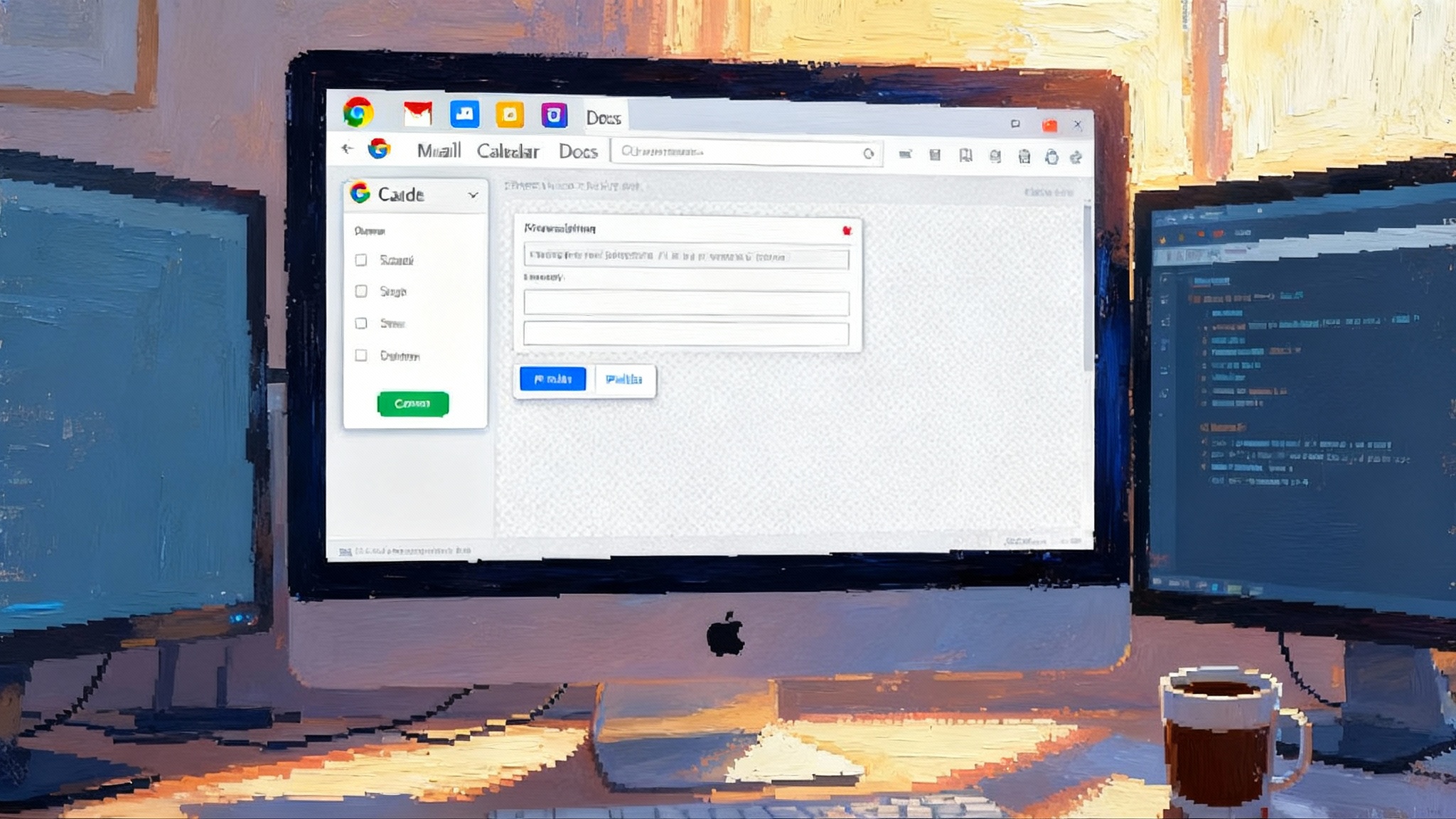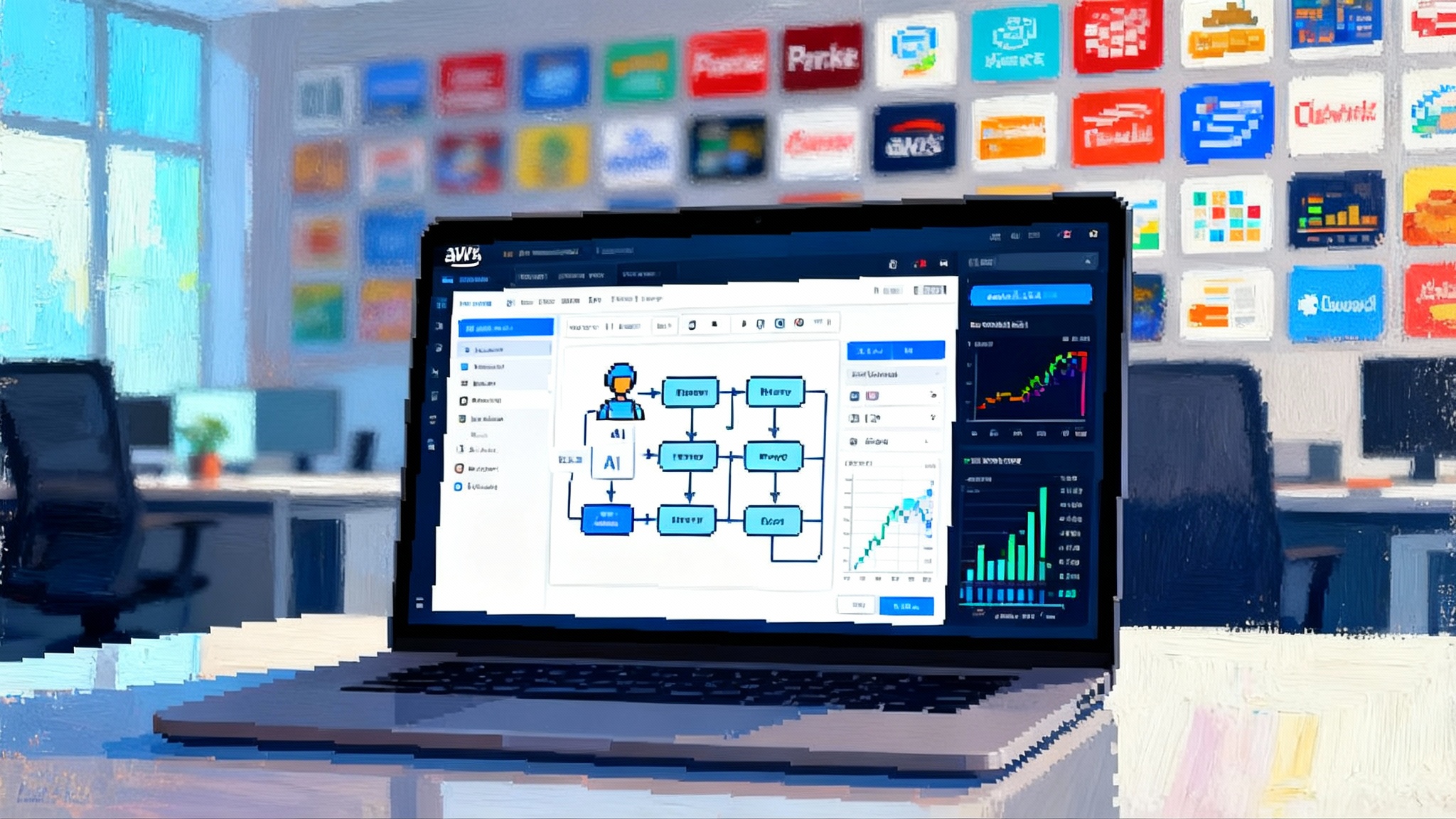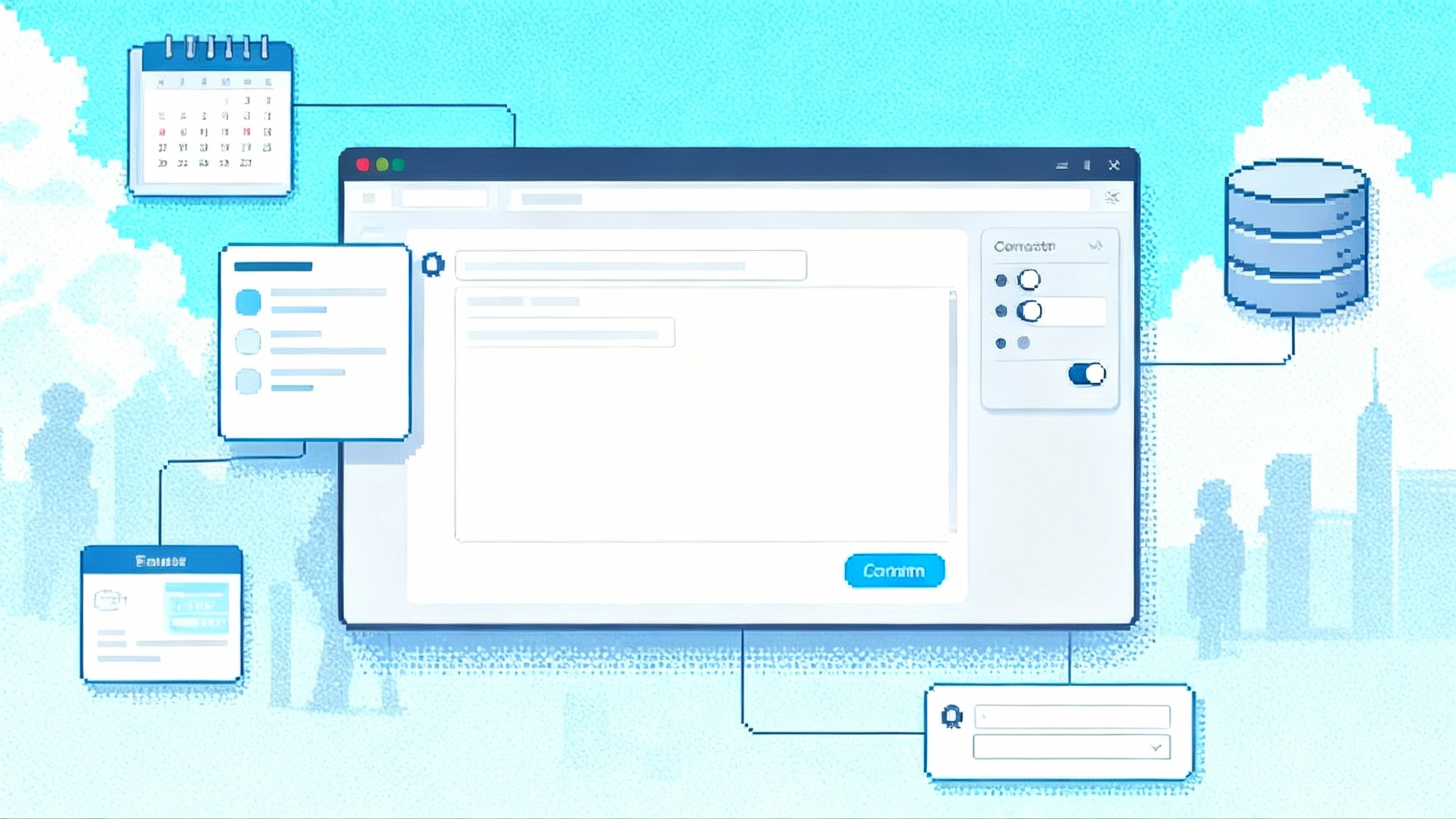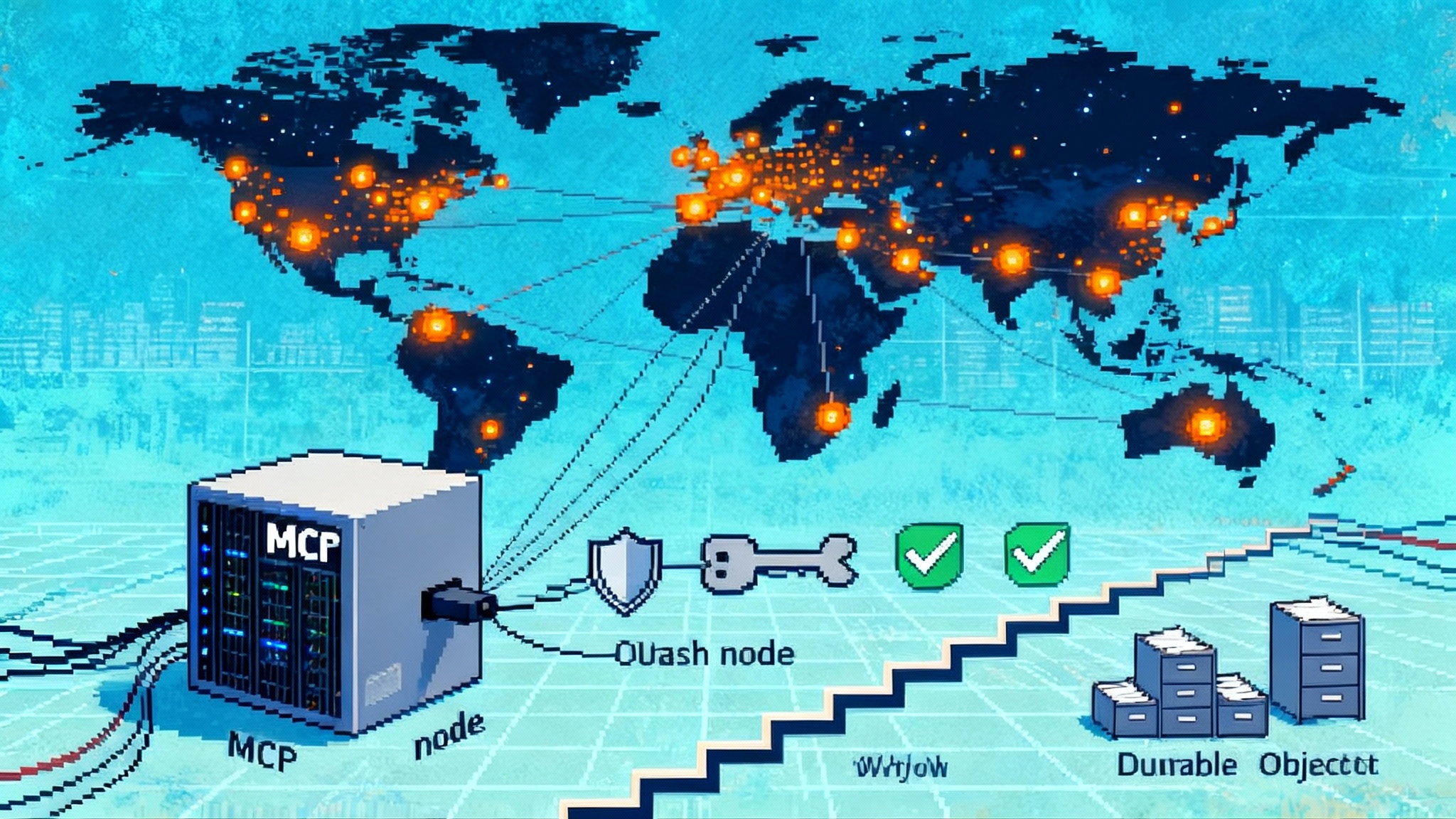Claude for Chrome arrives as browser native agents go live
Anthropic’s Claude can now act inside Chrome for a 1,000 user research preview with real site permissions, per action confirmations, and Sonnet 4.5 multi tab skills. See what changed and how to pilot it in 90 days.

The breakthrough: agents step into the browser
On August 26, 2025, Anthropic quietly crossed an important threshold. The company opened a research preview that lets Claude act directly inside Google Chrome for a limited group of 1,000 Max users. This is not another side panel that summarizes pages. Claude can read the Document Object Model, click buttons, fill forms, and move through real websites with guardrails shaped by red team testing. Anthropic describes site-level permissions, per-action confirmations for sensitive steps, and early telemetry on prompt injection attempts in its Anthropic research preview.
This moment matters because the browser is the common work surface for modern companies. Calendars, email, ticket queues, procurement portals, customer knowledge bases, and internal tools all run on the web. Moving agents into the browser turns that surface into a runtime. You give instructions, the agent performs actions, and the system records what happened.
What is truly new here
Early testers are not just chatting with Claude while they browse. They are delegating control to a model under rules. Three design choices stand out:
- True browser control. Claude can act on live websites through the extension. It sees real markup, follows links, clicks buttons, and enters text.
- Site-level permissions. Users decide which domains Claude can touch. This narrows the blast radius if anything goes wrong and aligns access with how businesses already think about trust.
- Per-action confirmations. Before high risk steps such as publishing, purchasing, or sharing personal data, Claude requests confirmation. Even in autonomous mode, sensitive actions trigger prompts.
Why these choices matter: the agent and the website now negotiate control. Explicit permissions and confirmations make that negotiation visible and auditable. Enterprises can govern it with policy and logs.
The safety telemetry that changes the conversation
The research preview is built around a simple thesis: browsers are adversarial by default. Sites can hide instructions in invisible elements, tab titles, or crafted URLs that only an agent would process. Anthropic’s post is unusually transparent about measured risk. In internal adversarial testing, attacks succeeded 23.6 percent of the time without mitigations. With new mitigations in autonomous mode, that rate dropped to 11.2 percent. On a focused set of browser-specific attacks, such as hidden form fields and malicious instructions in URLs or tab titles, mitigations reduced measured success from 35.7 percent to zero on that set, according to the same preview.
These are not victory laps. They are baselines. The lesson is not that prompt injection is solved. The lesson is that browser-native agents can generate telemetry that can be governed. When you measure attack classes, confirmations, and blocks, you turn a scary problem into a managed one. Keep those numbers in mind as you design your own pilot.
Sonnet 4.5 turns tab chaos into a workspace
In late September, Anthropic updated the extension to default to Sonnet 4.5 and added a practical trick that mirrors how people actually work. The model can operate across multiple tabs at once. The workflow is straightforward. You drag tabs into Claude’s tab group, and the model can see and act across that group. That enables powerful patterns in everyday tasks: compare two policies while drafting an email, read several knowledge base pages before updating a ticket, or compile data from search results into a spreadsheet without constant switching. See the specifics in the Claude for Chrome release notes.
Why this matters operationally: tab groups become boundaries for context and permissions. You are defining the work surface the agent can see. That is both a usability win and a security primitive.
The browser is becoming the universal agent runtime
If you want agents to do production work without re-platforming every tool, the browser solves four recurring problems:
- Surface coverage. Almost every enterprise workflow has a browser front end. Agents that speak the language of the browser can operate legacy portals, modern SaaS, and internal dashboards without one-off integrations.
- Stable action model. The browser provides a consistent set of actions: navigate, read, click, type, upload, download. Plans become more portable across sites. When a site changes, the verbs stay the same.
- Governance hooks. Site permissions, action confirmations, and tab groups are natural policy boundaries. Administrators can scope by domain, log confirmations, and review transcripts to verify policy adherence.
- Security instrumentation. Browsers expose signals about DOM structure, network requests, and tab state. That creates an observable surface where injection patterns can be detected and mitigated.
Put differently, the browser collapses the integration problem into a control problem. You do not have to wire every system to an agent. You let the agent operate the system you already use, and you constrain it with permissions, confirmations, and telemetry.
For broader context on how the agent stack is changing, compare this shift to the rise of agent hubs as the control plane and how Google is repositioning enterprise work around agents as described in inside Gemini Enterprise.
What Claude actually does well today
Early examples point to three routine categories that benefit from browser-native agents:
- Forms and structured tasks. Expense reports, vendor onboarding, partner registration, and regulatory filings. Claude can fill fields, upload files, and check for missing data with fewer copy paste mistakes.
- Email and calendar. Triage inboxes by label, prep replies from templates, schedule meetings, and move messages into workflows. With site-aware navigation, common office tasks become one line requests.
- Quality assurance and content checks. Validate that pages render, links resolve, and templates follow brand rules. For internal apps, have Claude run a smoke test before a release candidate ships.
None of these require science fiction autonomy. They require repeatable steps, clear boundaries, and confirmation rules for anything risky.
A pragmatic 90 day pilot playbook
You can turn these ideas into production grade flows in three months if you treat the browser like a new system that needs scoping, controls, and monitoring.
Phase 0: two days of preparation
- Name one product owner, one security owner, and one business owner. Decisions should not stall.
- Choose three target workflows: one form, one email process, and one quality check. Each should take five to fifteen minutes manually and run at least ten times per week.
- Define success metrics up front: time saved per run, completion rate without correction, number of confirmations triggered, number of blocked actions, and any prompt injection detections.
Days 1 to 14: sandbox and safety first
- Create a dedicated Chrome profile for the pilot on managed devices. Install the extension only in this profile.
- Configure site-level permissions only for the domains required for the three workflows. Everything else stays off at first.
- For each workflow, script the steps in natural language as if you were training a teammate. Add explicit rules about what to never do, such as do not send emails outside the pilot alias and do not submit forms without confirmation.
- Turn on per-action confirmations for publishing, purchasing, and any data transfer outside your domain. Start conservative. You can loosen later.
- Build a red team checklist of injection tests. Include invisible text in a page, crafted tab titles, and suspicious query parameters. Run the checklist weekly and record what confirmations fired and what was blocked.
Days 15 to 30: turn scripts into reusable shortcuts
- Convert the best prompts into reusable slash commands. Keep them short and parameterized. Example: /expense_submit for a specific vendor form with variables for date and amount.
- Use tab groups as work surfaces. Place all required pages for a task into one group and drag them into Claude’s tab group before running a shortcut. This keeps context coherent and permissions scoped.
- Add lightweight artifact outputs. Ask Claude to produce a brief run log and a checklist of the steps it took. Store these in a shared folder for traceability.
- Expand to a second team as shadow users. Let them run the flows while your core team observes. Compare completion rates and user effort between teams.
Days 31 to 60: scale volume on noncritical data
- Increase the frequency of the three flows. If you have a queue of internal forms or a backlog of low risk email triage, move that work into the pilot. Track the ratio of runs that required human intervention.
- Introduce one cross tab workflow. For example, compile the top five vendor issues from a support tool, review relevant knowledge base pages, then draft a status email. Use tab groups, and confirm any send step.
- Add guardrails you wish you had earlier. You will learn what users try to do. Update slash commands with do not do clauses and require explanations when a confirmation is requested.
- Instrument and review. Summarize weekly: time saved, confirmations requested versus accepted, blocks by class, and any surprising behaviors. Send a short weekly memo to stakeholders with examples.
Days 61 to 90: harden and decide
- Run an adversarial week. Ask security to plant injection attempts in the allowed domains. Include hidden form fields, malicious tab titles, and crafted URLs. Measure detections and near misses.
- Decide which confirmations can be removed and which should stay. The right answer is rarely zero. Aim for a small set of meaningful pauses. Calibrate to real risk.
- Add one production facing workflow. Pick something customer visible but low impact, such as labeling support tickets or updating a noncritical content fragment. Include a human approval step at first.
- Document the operating standard. For each live flow, write the purpose, allowed sites, required confirmations, shortcut text, and the expected run log. Store this in your change management system.
- Make the go or no go call. You now have enough data to decide whether to expand, pause, or retire the pilot. If you expand, plan the next three workflows, budget the device profiles, and formalize ownership.
For companies looking at end to end automation, this browser centric approach complements what others are doing at the application and platform layers. See how UiPath and OpenAI put computer-use agents in production to understand the broader operating environment your browser agents will join.
Practical tips that save hours
- Narrate the plan on early runs. Ask Claude to explain the intended result and which confirmations will likely trigger before it acts.
- Prefer narrow scopes. A flow that touches two domains with two confirmations will be faster to trust than one that touches five domains with none.
- Store prompts and artifacts next to the work. If a process lives in a team drive, keep its slash commands, logs, and examples there too.
- Build a tiny regression suite. Save two or three known good tasks per workflow. Rerun them after browser or extension updates.
- Use tab groups to reset context. When a task fails, close the group, rebuild it, and try again. This avoids hidden state across runs.
What to watch before general availability
- Reproducibility. Can you run the same workflow twice and get the same sequence of actions and the same confirmations. If not, find out why. Variation should come from the site, not the agent.
- Injection coverage. The attack classes in your environment will differ from a vendor test set. Keep your own list of patterns that matter to your sites and check them monthly.
- Permission ergonomics. Does the site-level model map to how your business defines trust. If you need per path or per application scoping within a domain, note that gap.
- Logging fidelity. Do you have a durable run log that shows intent, actions, and results. Can you answer which actions were confirmed, which were blocked, and why.
- Performance under load. Multi tab work is powerful but resource hungry. Observe memory usage, page load time, and the rate of flakiness as the number of tabs grows.
- Vendor model updates. The switch to Sonnet 4.5 improved behavior in many cases, but any model update can change flows. Your regression suite should catch shifts before users do.
What this signals for the agent ecosystem
The pattern is becoming clear. The browser is where agent work becomes real work. You can see it in the design choices. Permissions live at the layer where users already think about risk. Confirmations happen at the moments that matter. Telemetry flows from concrete interactions, not toy tasks.
For buyers, this means an emerging split in the stack. Application vendors will keep adding built in agents. Platform vendors will ship orchestration, policy, and observability. And the browser will become the universal adaptor for the long tail of workflows that no one has time to integrate. If you are building an internal control plane, this release sits neatly beside the trend toward agent hubs as the control plane and the shift toward enterprise grade agent platforms described in inside Gemini Enterprise.
For operators, the message is pragmatic. Do not wait for a perfect product that handles every edge case. Start a narrow pilot with real tasks, controlled sites, and measured outcomes. The outcome you want is not a buzzword about autonomy. It is a short list of flows where time went down, error rates went down, and everyone involved can explain why it is safe.
Agents will keep getting better at using computers. New models will push benchmarks and new safety techniques will catch new attack patterns. What will not change is that people and companies work on the web. The sooner you learn to manage an agent in that environment with real permissions, real confirmations, and real telemetry, the sooner you can turn today’s browser into tomorrow’s platform for work.
That is the promise of Claude for Chrome. Not magic. Not vague productivity. A familiar window where instructions become actions and where the controls and the measurements live close to the work itself. That is how agents move from novelty to infrastructure.








